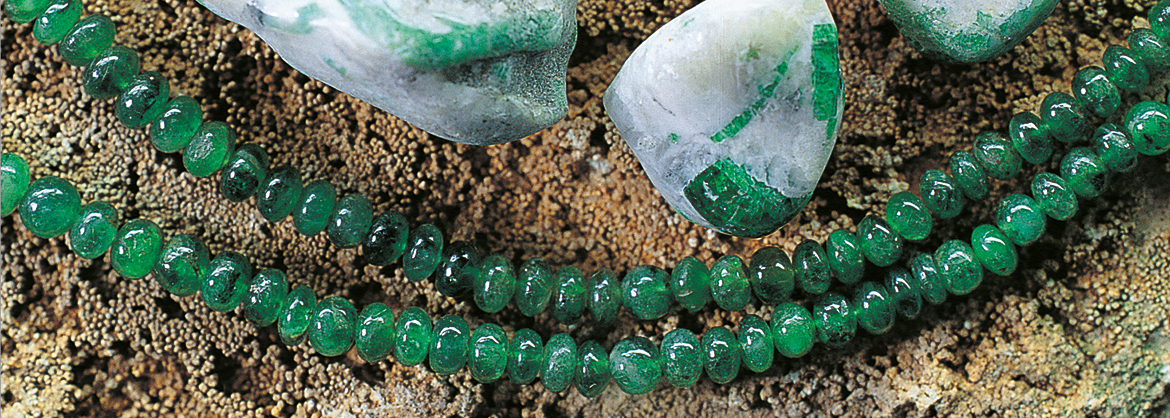
Emerald - bearing and meaning of a popular gemstone
Emerald enriches us with clarity, alertness and vision, so that we can create the necessary space for new ideas. Goals can be found and formulated more easily with his support - the orientation in difficult times is made easier. Emerald also strengthens our view of what is beautiful, harmonious and just. Thus we can live intensively, enjoy and develop a deeper understanding for the relationships with our fellow human beings. But also the regeneration of our own forces can be strengthened by emerald, as we see through better what is good for us.
Mineralogical profile Emerald
Chemical formula: Be3Al2(Si6O18) + K,Li,Na + (Cr,V)
Mineral Class: variety of beryl family from mineral class of ring silicates, beryllium aluminum silicate
Color: Emerald green, ranging from light to yellow-green to dark
Gloss: Glas-like
Crystal system: Hexagonal
Moh hardness: 7.5 - 8
Cleavability: Imperfect, small-scalloped, uneven or brittle fracture
Localities, main suppling countries: Colombia, Brazil, India, Zambia, South Africa, Mozambique, Tanzania, Austria, Russia
Origin: Primary hydrothermal in pegmatite veins; tertiary metamorphic in the contact zone of two beryllium- and aluminum-bearing and chromium-bearing mica schists.
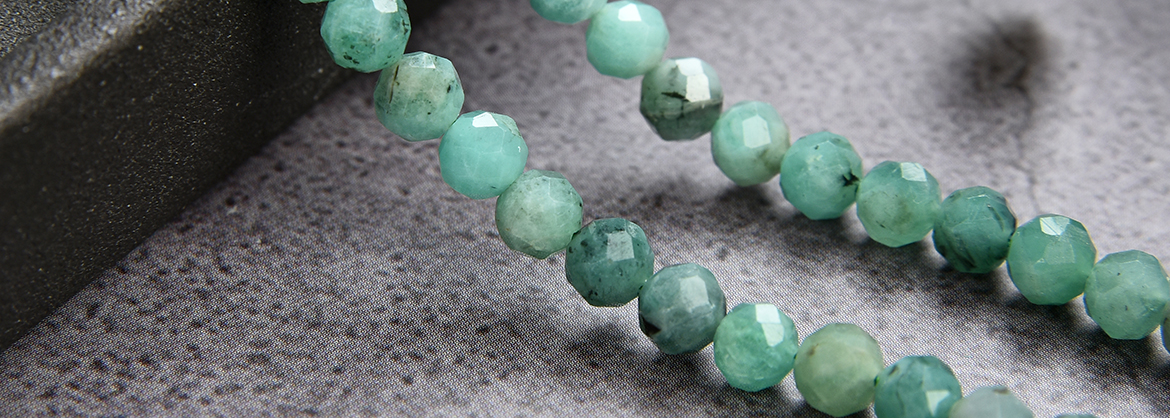
Origin of the name Emerald and synonyms
The name emerald is derived from the Greek word smáragdos (green stone). For the further origin of the word there are different theories, because similar sounding terms are found in different languages, for example "marakatam" (green) in Sanskrit, "barraqtu" (shining stone) in Semitic Akkadian or "bâraq"(sparkle) in Hebrew. There are currently no common synonyms for emerald.
The term "trapiche emerald" is used to describe a very rare variety of emerald in which inclusions and special conditions during formation produce a structure reminiscent of a wagon wheel with six spokes.
"False" emeralds
Both in retail and wholesale, some other minerals besides green beryl are given the name suffix "emerald" to give these stones a special value. These include.
+ green Fluorite "African Emerald"
+ Prase "emerald quartz" or "emerald mother"
+ prehnite "cape emerald"
+ green tourmaline "emeraldite"
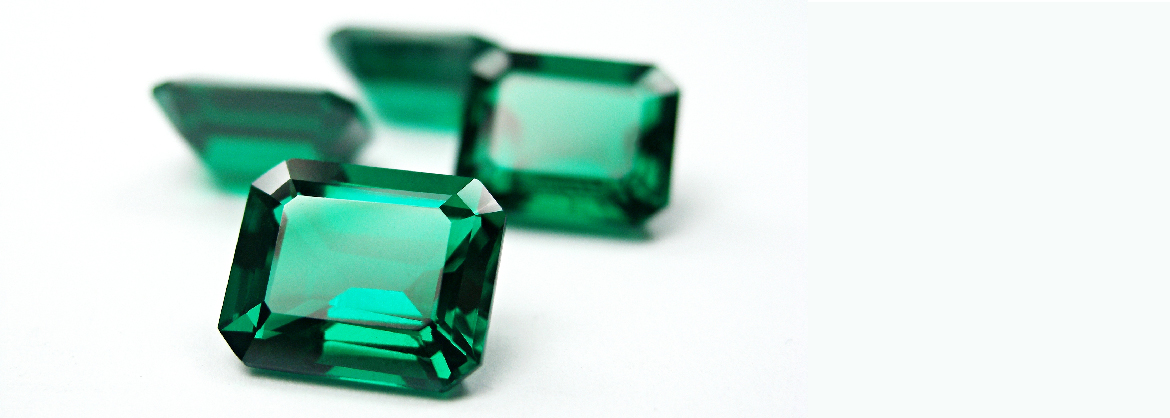
Confusion of Emerald
Emerald can be confused with green garnet (Demantoid, Grossular, Uvarovite), Chrome Diopside and green Tourmaline. In case of doubt, a mineralogical-gemological examination helps here.
As with all valuable gemstones, there are also with the emerald a lot of fakes. Often cracks are filled with Glass, the stones impregnated with oil, wax or plastic. Emerald is produced synthetically, also doublets and triplets are in the trade. Many fakes can only be detected by gemologists.
The first synthetic emerald with grindable quality was produced in 1935 at I.G. Farben in Bitterfeld. This synthesis was given the name "Igmerald", composed of the company name and the English term emerald.
Emerald as a gemstone
Unlike the Diamond, inclusions in the emerald (so-called "Jardin") are not considered to diminish the value, but rather as a sign of the stone's authenticity.
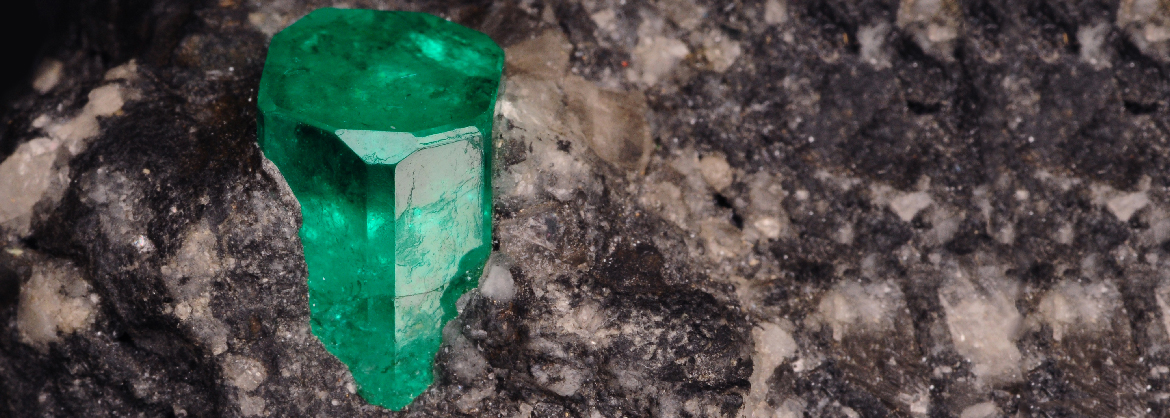
Historical facts about emerald
Emerald belongs to the four "classic" gemstones: Diamond, Ruby, Sapphire and Emerald. In the past, the term gemstones applied only to these four representatives of the mineral kingdom; all other jewelry and therapeutic stones fell under the category of Semi-precious stones. This designation was abolished in 1955, but still persists in common usage today.
The first emeralds were found ca. 2000 BC near the Red Sea. The legendary Hermes Trismegistos, a teacher of the Egyptian culture, whose life data are not exactly known, is to have its so-called "hermetic Laws", which belong to the most important foundations of esoteric knowledge, are said to have been engraved in tablets of emerald. These tablets were never found, but the texts have been handed down.
Habachtal Emeralds
The Habachtal in Austria is the only significant emerald discovery site in Europe. However, the small mine is no longer considered profitable today, but continues to be operated by a family of blasters for tourist reasons. Emeralds from the Habachtal are characterized by an intense green color, which comes from a high chromium content and a dark coloring of the carrier rock. Only very rarely are flawless crystals found, most specimens have inclusions and are not worth cutting. and are not worth cutting. The rarer larger and purer stones often adorn famous pieces of jewelry, such as the Imperial Crown Insignia in Vienna and the Dommonstrance in Salzburg. In Mattsee Abbey, a pectoral cross with five Emeralds and a large crystal with a size of 11 x 9 cm can be admired. Emerald in Matrix is also called Emerald Habachtaler type.
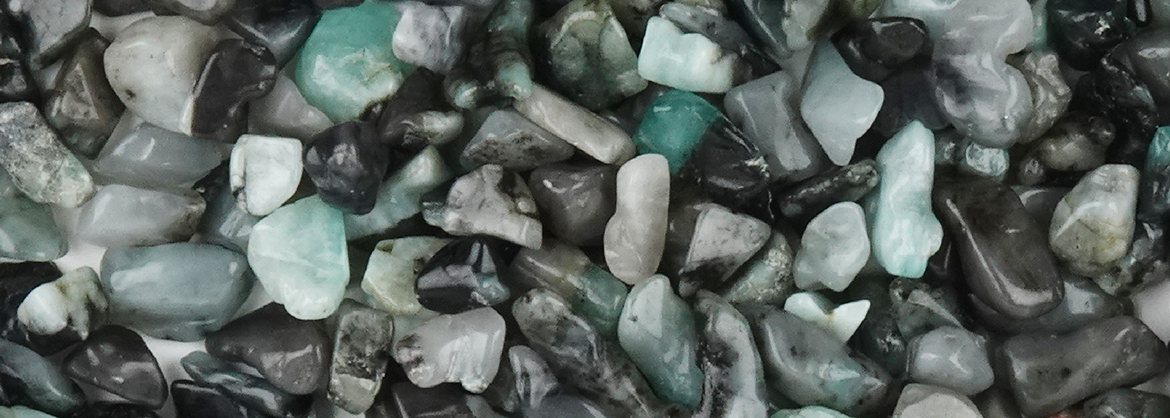
Use and applications with Emerald
Since ancient times, emerald has been attributed with a variety of helpful properties. It promotes spiritual growth, clarity, foresight and a sense of beauty, harmony and justice. Strengthening friendships and partnerships and the strengthening of connections between lovers and spouses are attributed to him. He supports the ability to regenerate and strokes of fate can be overcome more easily. In life crises, he helps to find new orientation.
For Hildegard von Bingen is the emerald something like a "universal healing stone" She writes about the gem "... For this reason, the emerald is a good remedy for all ailments and diseases of man, because the Sun gives birth to it, and because all its substance is derived from the greenness of the air."
For stone medicine application, exclusive, usually faceted gemstones are usually out of the question, because they are very expensive, but also small. Therefore, for gemstone massages, stone circles, for laying on and for other applications are mostly cheaper, opaque emeralds in bedrock is used.
.As water stone emerald is used for strengthening the themes of finding meaning, orientation, growth and harmony.
Chakras and astrological assignment of Emerald
Emerald is a gemstone for the heart chakra. It is associated with the sign Cancer, for which it is considered an emblem of hope.